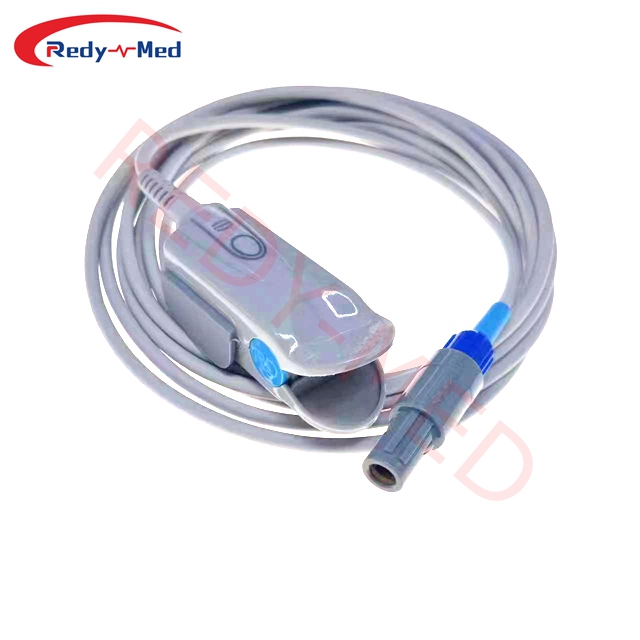
- Home > News > Industry News
Breathe Easy: Navigating the Future of Respiratory Health with Spo2 Sensor Innovations
2023-12-28 18:02:36
Revolutionizing Respiratory Health Monitoring for a Better Tomorrow

In recent years, the field of respiratory health monitoring has witnessed an incredible transformation, thanks to the advent of Spo2 sensor innovations. These advancements have revolutionized the way we assess and manage respiratory conditions, empowering individuals with real-time data and actionable insights. The integration of Spo2 sensors into healthcare devices has paved the way for improved diagnostics, personalized treatment plans, and enhanced patient outcomes. This article delves into the exciting possibilities and future prospects of Spo2 sensor innovations, highlighting their potential to shape the landscape of respiratory health.
1. Understanding Spo2 Sensors: A Gateway to Respiratory Insights
The core functionality of Spo2 sensors lies in their ability to estimate the oxygen saturation levels in the bloodstream. By measuring the ratio of oxygenated hemoglobin to the total hemoglobin, these sensors provide a valuable indicator of respiratory health. Through the use of pulsed infrared light and a photodetector, Spo2 sensors can noninvasively assess blood oxygen levels, acting as a vital tool in the diagnosis and management of respiratory conditions such as asthma, chronic obstructive pulmonary disease (COPD), and sleep apnea.
2. Enhancing Remote Monitoring: The Power of Spo2 Technology
One of the most significant advancements brought about by Spo2 sensors is the ability to enable remote monitoring of respiratory health. With the integration of Spo2 sensors into wearable devices, individuals can effortlessly track their oxygen saturation levels in real-time, regardless of their location. This technology has particularly proven to be a game-changer during the global COVID-19 pandemic, allowing healthcare providers to remotely monitor patients, identify early signs of respiratory distress, and intervene promptly.
3. Personalized Treatment Plans: Optimizing Respiratory Care
By harnessing the rich data provided by Spo2 sensors, healthcare professionals can tailor treatment plans to address the specific needs of each respiratory patient. The continuous tracking of oxygen saturation levels enables healthcare providers to identify patterns, triggers, and fluctuations in respiratory health accurately. This data-driven approach empowers physicians to optimize medication regimens, adjust therapy options, and offer personalized lifestyle recommendations to patients, ultimately leading to improved respiratory outcomes and enhanced quality of life.
4. Early Intervention and Preventive Care: Uncovering Silent Symptoms
Respiratory conditions often exhibit subtle symptoms that can easily go unnoticed. Spo2 sensors play a crucial role in detecting early warning signs, even before patients experience recognizable symptoms. By regularly monitoring oxygen saturation levels, individuals at risk of respiratory conditions can stay vigilant and seek timely medical intervention. The early detection enabled by Spo2 sensors helps in preventing exacerbations, reducing hospital admissions, and prolonging the overall respiratory health of patients.
5. Pushing Boundaries: The Future of Spo2 Sensor Innovations
The future of respiratory health looks promising, with ongoing research and development efforts focused on advancing Spo2 sensor technologies. From improved sensor accuracy to the integration of artificial intelligence, innovation continues to push the boundaries of respiratory health monitoring. Scientists are exploring the potential of miniaturized and wireless Spo2 sensors, making them more accessible and comfortable for individuals in need. Furthermore, advancements in data analytics and predictive algorithms aim to enhance the interpretation of Spo2 data, empowering both healthcare professionals and patients to make informed decisions regarding respiratory health management.
Conclusion
Spo2 sensor innovations have undoubtedly revolutionized the landscape of respiratory health monitoring. Through real-time oxygen saturation measurement, remote monitoring capabilities, personalized treatment plans, early intervention, and ongoing advancements, Spo2 sensors are ushering in a future where respiratory health is managed with precision and care. As the field continues to evolve, respiratory conditions will be better understood, managed, and, ultimately, conquered, leading to a brighter and healthier future for individuals with respiratory conditions worldwide.
Get the latest price? We'll respond as soon as possible(within 12 hours)




